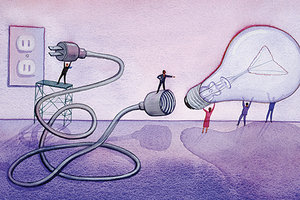With the profound shift in health care, compliance, reimbursement and even patient demographics, the business and practice of chiropractic are in flux.
Today's chiropractic practice requires value, differentiation and competitive appeal to be seen and heard above the noise. Patients today want to engage in a relationship with the doctor and also engage in healthy debate. This requires 21st century techniques for patient education.
Tip #1: Modern Patients, Modern Health Concerns
First and foremost, it is important to understand that chiropractors cannot solely focus on back issues anymore. Today's chiropractor must advocate for total wellness – even more so than you may have done in the past. Why? Because there has been a complete metamorphosis of patients in terms of three specific variables:
- Age: Globally, individuals are aging, but they desire to live longer, are living longer and want to discover how to do so. That opens doors for you to educate them on natural options that promote healthy aging.
- With the increasing influx of superbugs, new infections such as Zika and Ebola, and an increasing sense that pharmaceutical drugs are not always the only / best answer, more patients are looking for drug-free options. Enter chiropractic care and the opportunity to educate patients on a better way.
- Obesity: Patients today are not only more sedentary, but also eat poorly. You can engage more patients by educating them on proper food intake, proper exercise regimens and food allergies so they can make better choices.
 With this in mind, you must begin to consult patients in all life's phases, not just the back. Start by refocusing your report of findings from back and neck issues to total-body health. Intake / history forms must focus on diet, supplementation, exercise, current medication use and past medical / surgical procedures, allergies, etc., so you have a total picture of the patient.
With this in mind, you must begin to consult patients in all life's phases, not just the back. Start by refocusing your report of findings from back and neck issues to total-body health. Intake / history forms must focus on diet, supplementation, exercise, current medication use and past medical / surgical procedures, allergies, etc., so you have a total picture of the patient.
Are you already teaching your patients about total-body health? Then consider this question: Are you leaving the discussion to a brochure and video in the waiting room or are you having the discussion? . There is so much you can offer, suggest and say that a brochure and stock video cannot.
Tip #2: Patients Value Access and Convenience
When it comes to patient education, you need to consider the methods of engagement used by today's patient. The contemporary patient has continual access to mobile devices, computers, etc. You must be able to reach them at any time.
Start by developing / purchasing a patient portal that enables patient interaction. These internal tools allow doctors and staff to broadcast messages to patients, such as current events concerning allergies or how to avoid injury when doing yardwork. A patient portal also gives patients the ability to query you with specific questions or concerns. Most importantly, a portal allows patients to discover information wherever, however, and whenever they desire.
Unfortunately, many chiropractors still use land lines as their primary method of engagement and are only available on the days they physically work in the office. A patient portal is active 24 hours per day.
Tip #3: A Picture Is Worth a Thousand Words
YouTube is one of the largest communication / engagement tools in use today. Every minute, 300 hours of video are uploaded and more than 4 billion hours of video are viewed per day. Coincidentally, Facebook and Twitter users are beginning to decline, while YouTube, Snapchat and Instagram videos and users are growing.
The rationale is simple: A picture says a thousand words. A chiropractor can hand the patient a brochure, or write an article or brochure – or you can create 3-5 minutes of video. Video illustrates your body language, your sincerity, your passion and your message. Patients become attracted to you as a health care professional and appreciate your expertise and the information you are providing. Videos also can be shared so your patient education extends far beyond your existing patient base.
Tip #4: Become a Local Thought Leader
With the popularity of video, reality television and the numerous television channels, a tremendous method for educating your patients is to become a thought leader in your community. Local / regional television and radio stations are always seeking thought experts to interview for their constituents.
Take some time to review local television and radio; notice who is talking and what is being discussed. Then contact a TV / radio station and ask to be interviewed about the subjects I discussed earlier: anti-aging, whole-body health, obesity, etc. Doing so not only makes you the expert in the field, but also educates your patient base.
If you're still using yesterday's methods to engage today's patient, you're making a big mistake. By engaging in new methods of communication and education, you will offer the value, differentiation and provocation more and more patients are seeking. It's a simple premise: With today's contemporary patient, you must boldly go where no chiropractor has gone before.
Drew Stevens, PhD, is known as "The Revenue Doctor." He helps chiropractors develop strategies that exponentially grow revenue and returns personal time. He is the author of eight books including the widely acclaimed "Practice Acceleration" by Greenbranch publishing. He can be reached through his website at www.stevensconsultinggroup.com.




